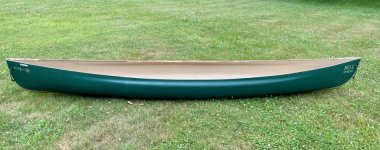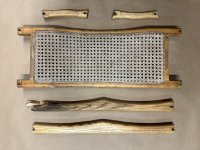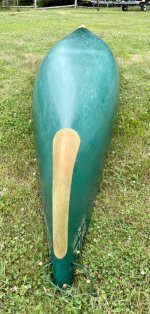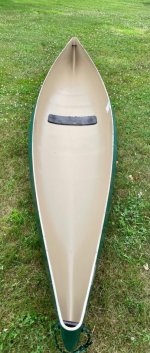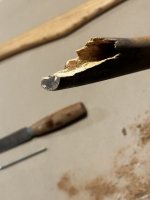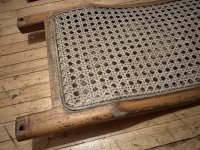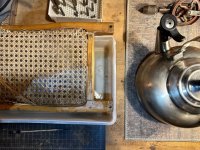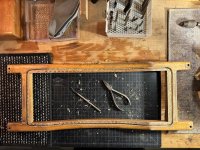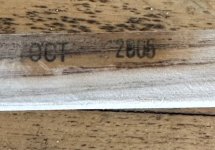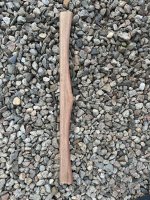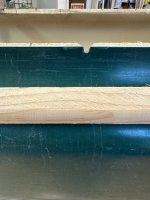On to the replacement gunwales: I went back and forth on species but ultimately settled on Douglas Fir. It's a reasonable compromise between availability, weight, strength and rot resistance. I purchased two 16' 1x4 pieces of flooring, so they came with a tongue and groove, and a dadoed recess on the bottom surface. That flooring-style profile meant that I had to be a little conscientious about the milling, but it worked out ok. With this selection, I will now have three different species of wood on this boat, so my "restomod" is turning into a "mongrel."
This is my first gunwale replacement job, so I'm still ironing out the best order of operations. For instance, whether I should apply round-over profiles on the router table before installation or on the boat by hand after fitting the gunwales. So far I've managed to to do it half wrong both ways, but I'm muddling through it!
I wanted a solid wood cap, with no exposed Royalex, but I punted on that detail in the interest of expediency and simplicity. So I'm proceeding with separate inwales and outwales, sandwiching the royalex in between.
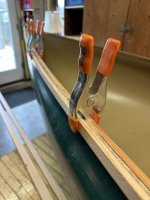
My outwale is 3/8" thick by 3/4" tall, with a round-over on the bottom edge, which I made on the router table before install. My inwale is 3/4" x 3/4", and has a round-over applied to its topside before installation, which I would not do again. I planned that round-over on the inwale to be on the underside, thinking it would be hard to rout the bottom edge once it had already been installed on the boat. After doing so, I realized I wanted square edges at the connection to the seat drops, so I flipped it over (orienting the rounded edge on top) and installed that quarter-round flush with the top edge of the Royalex. With a boatload of bar clamps and alligator clamps the bending was pretty easy, with no steaming required.
Outwale: 3/8" x 3/4":
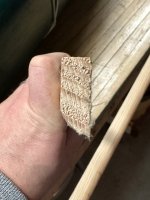
Inwale 3/4 "x 3/4":
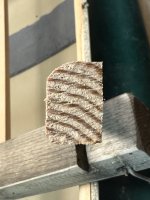
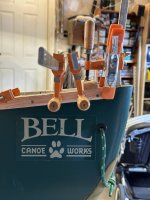
I used 8 x 1" stainless steel wood screws, screwed from the outside inwards, giving them about 3/8" purchase within the inwale. Towards the bow and stern, where the bending/twisting is a little more severe, I might swap a few out for 1 1/4" screws hereafter.
So here's how it stands as of last night. Inwales and outwales fitted on both sides. One of two inwales already has a topside quarter-round (left-side in the image below), while the other remains square. Both outwales have a bottom edge quarter round.
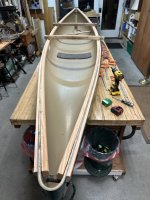
I'm glad to have left the quarter-round off the topside of the outwale, because the tumblehome amidships forced the outwale to be installed higher than top edge of the hull. I'm going to plane/trim-rout/sand the whole assembly flush on both sides.
Any recommendations on how to best do this so that it ends up smooth and planar? I was thinking I might use my belt sander or power plane, set up with an outrigger that could ride on the opposite gunwale to keep it from tilting/rolling as I work my way down its length.
